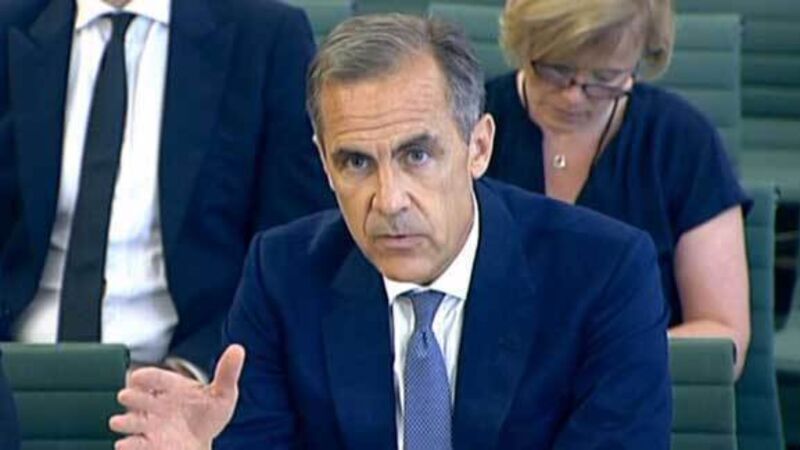Bank of England prepares to ‘war game’ crash-out Brexit

Bank of England governor Mark Carney will soon find himself thrust once more unto the breach if the UK crashes out of the EU without a transition deal.
The last time he was front and centre — just after the referendum on June 23, 2016 — he immediately provided reassurance during an unexpected shock that rocked markets and left a power vacuum in Britain’s political class.
At least there should still be a government afterward this time, unlike when prime minister David Cameron resigned the day following the vote. Analysts see sterling plunging on a no-deal, causing a headache for the Bank of England. A disruptive exit could have a broader economic impact, requiring a faster response that policymakers admit can only go so far.
The central bank has made sure banks are ready, but Mr Carney has warned that “financial stability is not the same as market stability”. The bank has experience in planning for the worst-case scenario.
The Scottish referendum in 2014 gave a dry run dealing with a disruptive event, even if Mr Carney never had to deploy the “considerable resources” planned in case of a separatist victory.
“It’s a tried and tested playbook,” said Sanjay Raja, UK economist at Deutsche Bank in London, which expects the Bank of England to ease policy immediately at its November meeting.
Cut rates and try to get ahead of it as soon as possible, try and make sure financial and credit conditions remain as accommodative as possible
Should a no-deal exit become official UK government policy, the bank will likely immediately kick-start contingency plans.
While the Bank of England stresses that the financial system is prepared, it also says that it can do little to curtail the inevitable market ructions. Mr Carney says the goal is to prevent problems in the financial plumbing so that the sector doesn’t make things worse.
Before the Brexit vote, the Bank of England said its plans included “intensive supervision” of banks, additional funding, and activation of swap lines with other central banks.
If markets are in free fall, Mr Carney may repeat his 2016 move of reassuring investors that the bank stands ready to inject liquidity if needed. He may hint at the possibility of more policy action at the November 7 interest rate decision. To further ease concerns the Bank of England could offer lenders extra liquidity provisions.
Its Indexed Long-Term Repo operations are already occurring on a heightened scheduled, having been held on a weekly basis since around the time of the UK’s original March exit date, and could be further stepped up. The bank will also step up market intelligence and meetings with their network of agents, said Tony Yates, a former official.
“Most of things about monitoring and war-gaming, I imagine they are doing that now,” he said. “There will be a permanent frenzy of activity.”
In 2016, Mr Carney said he napped for about two hours before watching the first results on television and going to the banks’ Threadneedle St headquarters at around 3.30am to oversee co-ordination with central banks around the globe.
The bank will be alive to any liquidity crunches. Some volatility is likely, especially if traders are hoping for a last-minute reprieve from the EU or British legal system.
Analysts see sterling dropping to $1.11 the day after a no-deal Brexit, from about $1.23 now. But no matter how violently the pound swings, the Bank of England is unlikely to intervene directly. Mr Carney said in September that there’s almost no chance of that unless there was breakdown in the market.
There’s also real-time observations.
Chief economist Andy Haldane said the Bank of England had developed a “system for monitoring traffic flow around the UK’s main ports using geospatial data from Google Maps”.
















